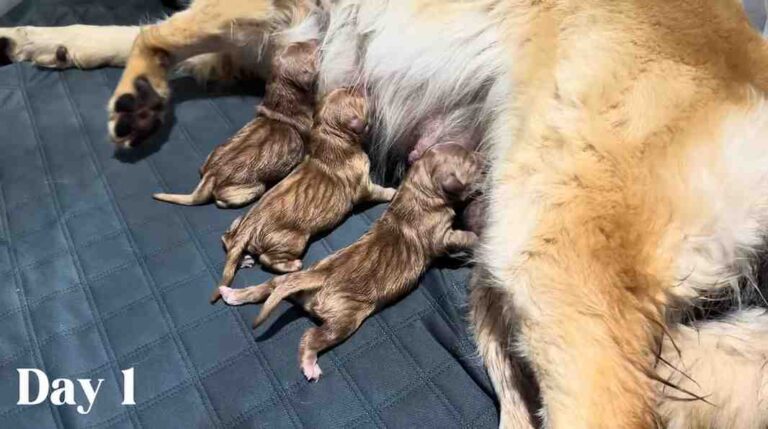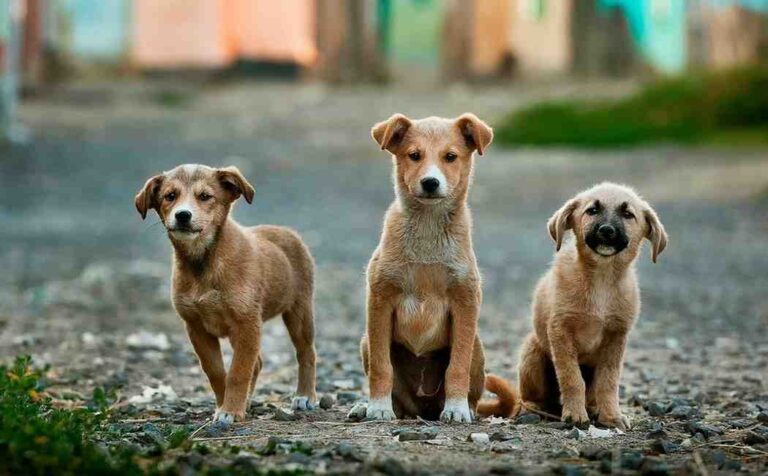If you’ve ever felt dehydrated, you’ll know it’s not the most pleasant experience. Just like us, pets also need proper hydration to support their vital bodily functions and maintain healthy organs. Having constant access to fresh, clean water is vital for your cat or dog to lead a healthy life, but how much water should your furry friend be drinking each day?
As a general rule of thumb, dogs of any age and breed should drink 40-60ml per kilo of body weight per day. Cats are slightly different, as their lifestyle, health, and various other factors affect how much water they should drink each day. A kitten aged between 3 to 6 months should drink around 70-135ml per day (depending on their weight), while a medium-sized cat (weighing up to 4kg) should drink around 200ml per day. A cat of a larger size (weighing up to 6kg) should drink around 300ml of water each day.
So, with these amounts in mind, how can you ensure your pet receives proper hydration every day, and how can you tell if your cat or dog is getting enough or too much?
Why Hydration Matters for Pets
Proper hydration is essential for all pets, no matter their species, breed or age. Water plays a key role in nearly every function of the body, from regulating temperature to supporting digestion and flushing out toxins.
Water helps your cat or dog maintain their energy levels, while also helping the normal function of their organs. If they are not getting enough, this can lead to chronic dehydration, which can increase the risk of urinary crystals, bladder stones, and kidney disease. If your cat or dog doesn’t drink enough water regularly, serious health problems like this can develop, which can mean a costly trip to the vet.
Having peace of mind that you can cover any unexpected costs is always helpful in this situation, which is why being insured is important. If your pet does develop health complications related to dehydration or any other illness, having suitable pet insurance coverage will help you cover the cost of unexpected vet bills. While preventive care is always the best approach, knowing you’re covered can make it easier to act quickly if your pet needs urgent medical attention.
Factors That Influence Water Intake in Pets
If you have multiple pets, you may notice they don’t drink the same amount of water, and that’s perfectly normal. The volume of water your cat or dog drinks will depend on various factors, such as their size and weight. Larger pets naturally require more water than smaller ones, so a big, active dog will need significantly more hydration than a smaller breed of puppy or a cat.
Some breeds are more prone to dehydration or have specific health conditions that affect how much water they need. Flat-faced breeds like Bulldogs and Persians are known to struggle more in the heat, so you’ll need to keep a careful eye on them to make sure they’re getting enough water, especially during the summer months.
Pets that eat dry food typically drink more water than those on wet or raw diets too, which contain higher moisture content. A cat eating canned food may drink very little from a bowl and still be well hydrated thanks to the moisture in their wet food.
If your pet is particularly active, especially dogs that go on regular walks or play outdoors, they’ll lose more water through panting and exertion and will have to drink more to make up for it. The weather is also a major factor in how much water your pet should be drinking. Hot, humid weather can cause pets to overheat and lose water faster. Likewise, indoor heating during winter can lead to dehydration if your beloved pet doesn’t have access to enough water.
How to Tell if Your Pet is Over Drinking
While we often worry about pets not drinking enough, too much of a good thing can also be a concern. If your cat or dog is over drinking, it can indicate an underlying health issue. While it could be nothing to worry about, your pet may be excessively drinking as a side effect of medications, or if they have issues such as urinary tract infections, kidney disease or diabetes.
A clear sign that your cat or dog is drinking more than usual is if you need to constantly refill their bowl. If your pet is asking to go outside more often or is having accidents indoors, it could be a sign they are urinating more due to the increased water intake. Their urine may also be a dark colour if they’re not getting enough water intake. Restlessness, increased pacing near water sources, or waking in the night to drink can also indicate something’s off with your pet.
How to Tell if Your Pet is Dehydrated
Dehydration in pets is something that can develop quickly and become serious if they don’t get the help they need. Something to look out for is a loss of skin elasticity, which you can test by gently pinching the skin at the back of your pet’s neck or between their shoulders. If your pet is well-hydrated, the skin should snap back quickly. If it stays ‘tented’ or returns slowly, it could be a sign of dehydration. This can also cause their eyes to appear dull or sunken, especially in cats.
Dry or sticky gums could indicate your pet isn’t getting enough water. Healthy gums should be moist, slippery and a shade of ‘salmon’ or ‘bubble gum’ pink. You may also notice that your pet has had a loss of appetite or refusal to eat altogether.
Excessive panting could be a sign that your pet is overheating and dehydrated. This is particularly noticeable in cats, as they don’t typically pant in the same way that dogs do after exercise or when they’re hot.
If you think your pet is dehydrated, you should supply them with fresh, clean water and encourage them to drink small amounts every few minutes. It’s a good idea to seek medical advice from your vet too, as they may need to see your pet to help them get hydrated.
Tips to Encourage Your Pet to Drink More Water
Some pets, especially cats, aren’t naturally inclined to drink lots of water. However, you can encourage them to drink more through a few simple techniques.
- It’s a good idea to give your pet multiple water sources, so place fresh water bowls in different areas around your home, especially in spots your pet frequents.
- Many pets also prefer running water (particularly cats), so they may drink more from a pet fountain that mimics running water, which is more enticing than still water.
- You should change your pet’s water every day, or more often if it’s a hot day or their bowl is dirty. Pets will typically avoid warm or stale water, so providing them with fresh, cool water may encourage them to drink more. Make sure to clean the bowl with warm water and mild, pet-friendly soap to remove any bacteria.
- Try mixing a bit of water into your pet’s dry food or offering a portion of wet food to increase their moisture intake. Some pets also enjoy playing with and licking ice cubes, whilst you can also try flavouring their water with a splash of low-sodium broth (as long as it’s free of onions and garlic).
Keeping Your Pet Happy & Hydrated
Just as you need to feed and play with your pets and make sure they get plenty of exercise, it’s also your job as a pet owner to make sure your cat or dog gets plenty of fresh, clean water. It’s important to research how much your pet should be drinking per day based on their breed, age, exercise level and other factors such as the temperature, and if you’re unsure, do speak to your vet.
By understanding how much water your pet needs, recognising the signs of dehydration or over-drinking, and being able to encourage the proper water intake, you can help your beloved pet lead a happy and healthy life. By following the above tips and getting expert advice, you can ensure your pet’s water bowl is always sufficiently filled.



